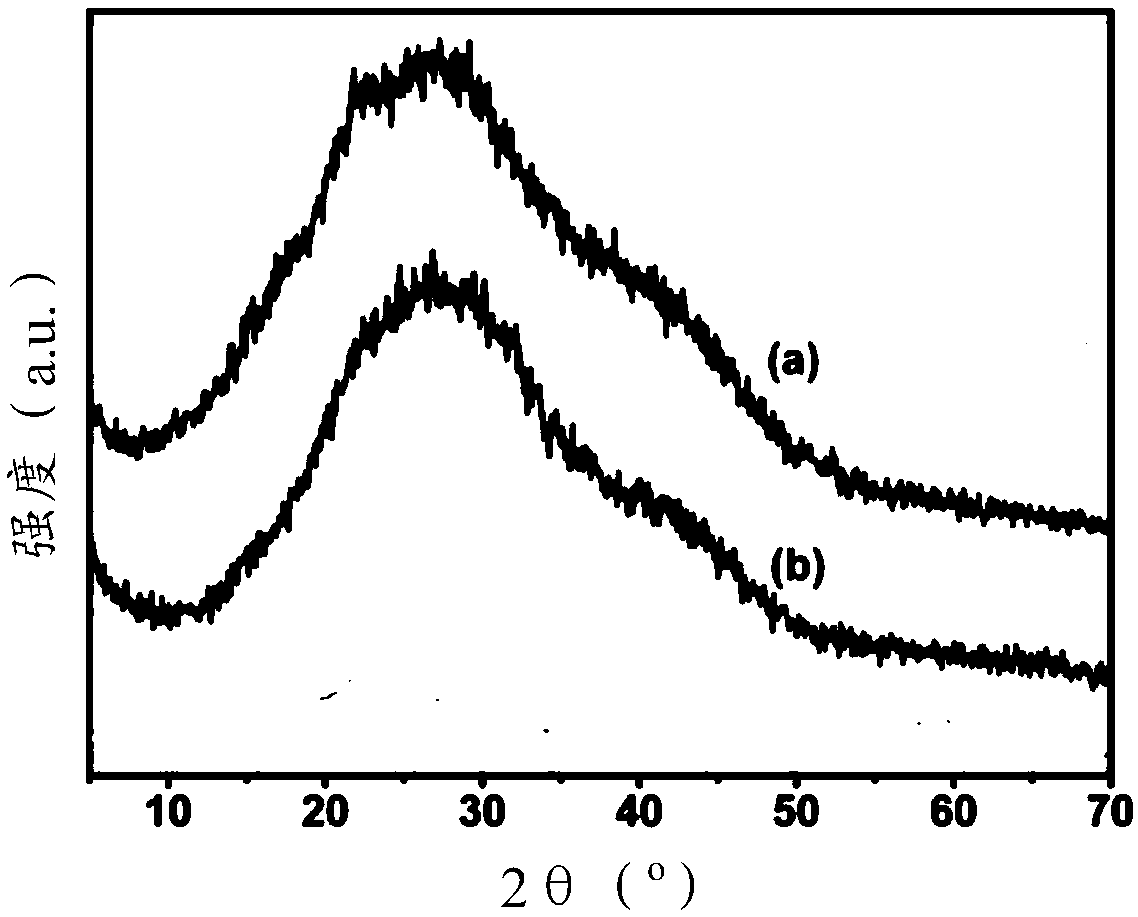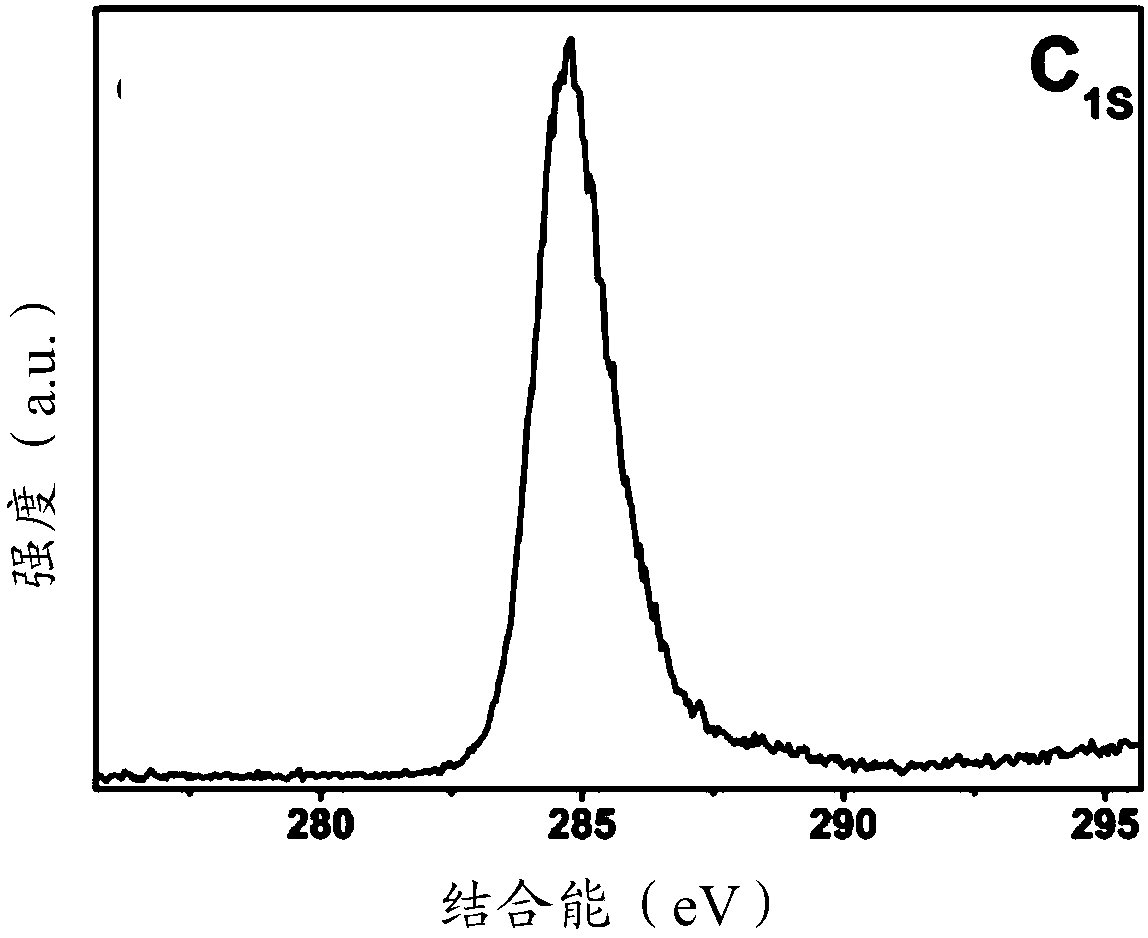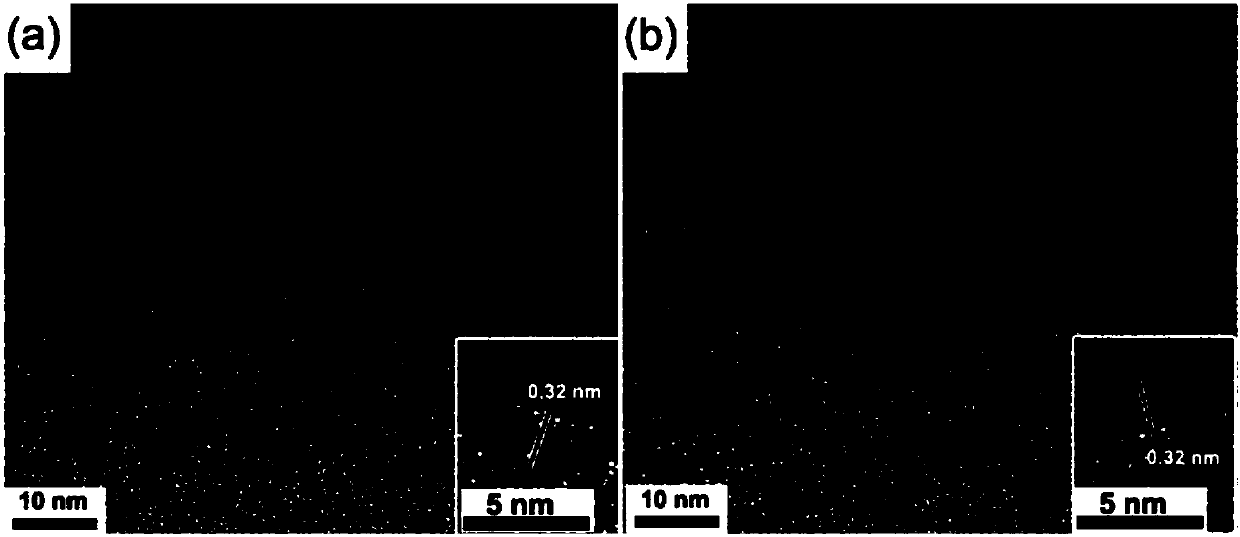Method for preparing carbon-based nanoparticles, carbon-based nanoparticles and application of carbon-based nanoparticles
A technology of carbon-based nanoparticles and particles, which is applied in nano-carbon, nanotechnology, nanotechnology, etc., can solve the problems of complex operation methods, poor stability, and low fluorescence efficiency of carbon-based nanoparticles, and achieve simple process, mild conditions, and good The effect of acid-base stability
- Summary
- Abstract
- Description
- Claims
- Application Information
AI Technical Summary
Problems solved by technology
Method used
Image
Examples
preparation example Construction
[0028] In the first aspect, the present invention provides a method for preparing carbon-based nanoparticles. Using leaves of deciduous trees as a carbon source, fluorescent carbon-based nanoparticles with good water solubility are prepared through low-temperature carbonization and oxidation treatment. During the carbonization process, the cellulose and protein molecules in the leaves are pyrolyzed, their own structure is destroyed and carbon deposits are formed. The carbon-deposited sample is oxidized in an oxidant, and the agglomerated particles are decomposed to form independent carbon-based nanoparticles, which are then dispersed in an aqueous solution. Specifically, the preparation method of the carbon-based nanoparticles of the present invention comprises the following steps:
[0029] (1) Carbonize the leaves of deciduous trees to obtain carbon sources
[0030] Deciduous trees are trees that lose all their leaves in autumn and winter or in dry seasons, generally referri...
Embodiment 1
[0053] Wash the fallen leaves of white birch with deionized water, remove the petioles and keep only the leaves. The blades were placed in a tube furnace, and the temperature was raised from room temperature to 400 °C at a rate of 1 °C / min under a slowly flowing nitrogen atmosphere, and then cooled naturally to room temperature after a constant temperature of 400 °C for 3 hours. Take 1 g of carbonized fallen leaves and place them in a round bottom flask, add 100 mL of 5 mol / L nitric acid and stir at room temperature for 6 hours. The obtained solution was centrifuged, and the collected black precipitate was added with 5 mol / L nitric acid and stirred at room temperature for 6 hours, the obtained solution was centrifuged again, and the supernatants obtained by the two centrifuges were combined. Then the supernatant was filtered with slow quantitative filter paper, and the obtained filtrate was dried by rotary evaporation, and the obtained sample was labeled as Def-CNPs-1.
Embodiment 2
[0055] The method adopted in Example 2 is the same as that in Example 1, except that the fallen leaves of weeping willow are used as raw materials, and the finally obtained sample is marked as Def-CNPs-2.
PUM
| Property | Measurement | Unit |
|---|---|---|
| particle diameter | aaaaa | aaaaa |
| diameter | aaaaa | aaaaa |
| diameter | aaaaa | aaaaa |
Abstract
Description
Claims
Application Information
 Login to View More
Login to View More - R&D
- Intellectual Property
- Life Sciences
- Materials
- Tech Scout
- Unparalleled Data Quality
- Higher Quality Content
- 60% Fewer Hallucinations
Browse by: Latest US Patents, China's latest patents, Technical Efficacy Thesaurus, Application Domain, Technology Topic, Popular Technical Reports.
© 2025 PatSnap. All rights reserved.Legal|Privacy policy|Modern Slavery Act Transparency Statement|Sitemap|About US| Contact US: help@patsnap.com



